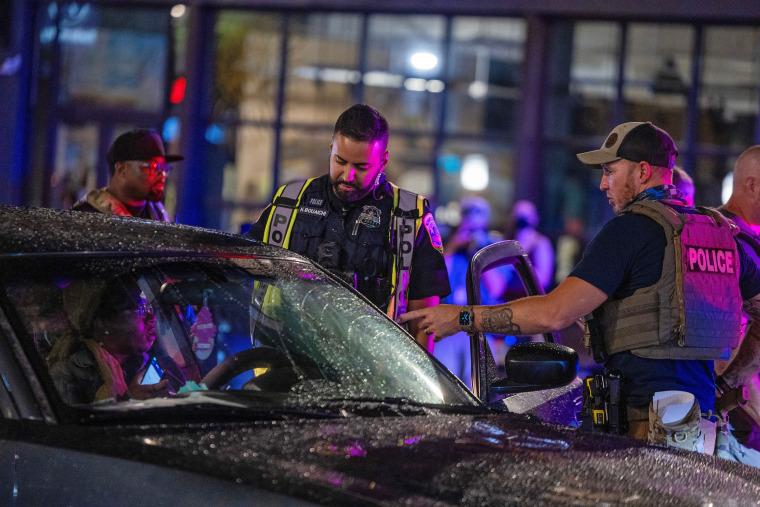Reevaluating Crime and Public Safety in Washington, DC: Beyond Political Narratives
Reassessing the Impact of TrumpŌĆÖs Crime Policies on the NationŌĆÖs Capital
Former President Donald TrumpŌĆÖs recent push to intensify crime enforcement in Washington, DC, has reignited discussions about the cityŌĆÖs safety and the accuracy of public perceptions. While his administration emphasized a hardline stance on crime, a closer look at the data reveals a more intricate reality. Crime trends in Washington, DC, during and after his tenure show fluctuations that do not always align with the heightened sense of insecurity portrayed in political discourse and media coverage.
Several elements contribute to this divergence:
- Focused Crime Narratives: Prioritizing violent crime statistics while downplaying improvements in other areas like property crime.
- Limited Federal Influence: Federal crime policies often had minimal direct impact on local policing strategies.
- Political Utilization of Crime Data: Crime statistics were sometimes leveraged to support broader political objectives rather than purely public safety goals.
| Crime Type | Before Trump Administration | During Trump Administration | Recent Figures (Post-Trump) |
|---|---|---|---|
| Violent Crimes | Approximately 5,000 cases | About 5,200 cases | Near 4,900 cases |
| Property Crimes | 12,000 cases | 11,800 cases | 11,700 cases |
| Drug-Related Offenses | 3,500 cases | 3,700 cases | 3,600 cases |
These figures illustrate that while some crime categories saw slight increases during the Trump years, others remained stable or declined afterward, challenging the narrative of a relentless crime surge. This complexity underscores the importance of grounding crime policy in comprehensive data rather than rhetoric alone.
Understanding the Gap Between Crime Statistics and Public Sentiment
Despite official reports indicating a downward trend in serious crimes such as homicides and robberies in Washington, DC over the past year, public anxiety about safety remains disproportionately high. This disconnect is fueled by several factors that amplify fear beyond what the numbers suggest.
Contributing factors to this perception gap include:
- Media Sensationalism: Continuous coverage of violent incidents magnifies public fear.
- Localized Crime Hotspots: Concentrated crime in specific neighborhoods distorts the overall citywide safety impression.
- Political Framing: Crime is often politicized, influencing voter opinions and community attitudes.
| Indicator | 2023 Data | Public Perception |
|---|---|---|
| Homicide Rate | Decreased by 8% | Believed to be rising |
| Robbery Cases | Dropped by 5% | Seen as worsening |
| Police Response Efficiency | Improved by 12% | Public remains skeptical or unaware |
This contrast between perception and reality highlights the need for more transparent communication and community engagement to align public understanding with factual crime trends.
How Political Discourse Shapes Policing Approaches in Washington, DC
Political narratives significantly influence law enforcement tactics, particularly in prominent urban centers like Washington, DC. During the Trump administration, the portrayal of a crime crisis led to increased demands on police departments to demonstrate swift action. However, this often resulted in a focus on visible enforcement measures rather than sustainable crime reduction strategies.
Law enforcement agencies grappled with reconciling political expectations with the nuanced realities of crime patterns. This sometimes caused a misdirection of resources, prioritizing aggressive crackdowns over community-based initiatives that have proven effective in fostering long-term safety and trust.
For example, the emphasis on rapid, high-profile arrests occasionally overshadowed data-driven programs aimed at addressing underlying causes of crime. The following table contrasts public beliefs with actual crime data during this period:
| Aspect | Public Belief | Verified Crime Data |
|---|---|---|
| Increase in Violent Crime | +30% | +5% |
| Rise in Property Crime | +25% | -3% |
| Police Deployment | More Foot Patrols | Shifted Toward Data-Driven Tactics |
- Escalated public fear prompted calls for tougher enforcement policies.
- Policing efforts sometimes prioritized optics over evidence-based crime prevention.
- Community trust was strained due to aggressive enforcement fueled by political pressure.
Strategies to Align Public Perception with Actual Crime Trends
Bridging the divide between how crime is perceived and the reality on the ground requires a multifaceted approach involving transparency, education, and community collaboration. Accurate and accessible crime data dissemination is essential to counteract misinformation and fear-driven narratives.
Effective measures include:
- Publishing timely, detailed crime reports with explanatory context.
- Organizing community meetings where residents can engage directly with law enforcement and data analysts.
- Collaborating with local media to promote fact-based journalism over sensationalism.
- Leveraging interactive digital tools to visualize crime patterns and trends.
Moreover, integrating social interventions alongside policing can address root causes of crime, such as economic hardship, educational disparities, and mental health challenges. This holistic approach fosters stronger community relations and sustainable safety improvements. Consider the following balanced framework:
| Approach | Primary Focus | Anticipated Benefit |
|---|---|---|
| Community-Oriented Policing | Building Trust and Partnerships | Enhanced Cooperation and Reduced Fear |
| Transparent Data Sharing | Public Access to Information | Greater Awareness and Informed Dialogue |
| Investment in Social Programs | Addressing Poverty and Education | Long-Term Crime Reduction |
Looking Ahead: Balancing Safety and Community Confidence in Washington, DC
The ongoing conversation about crime in Washington, DC, reveals the intricate interplay between political rhetoric, media influence, and actual crime dynamics. While former President TrumpŌĆÖs assertive crime policies brought attention to public safety concerns, the data and community experiences emphasize the need for nuanced, evidence-based approaches. Moving forward, fostering a balance between effective law enforcement and community trust will be vital to creating a safer, more informed capital city.







